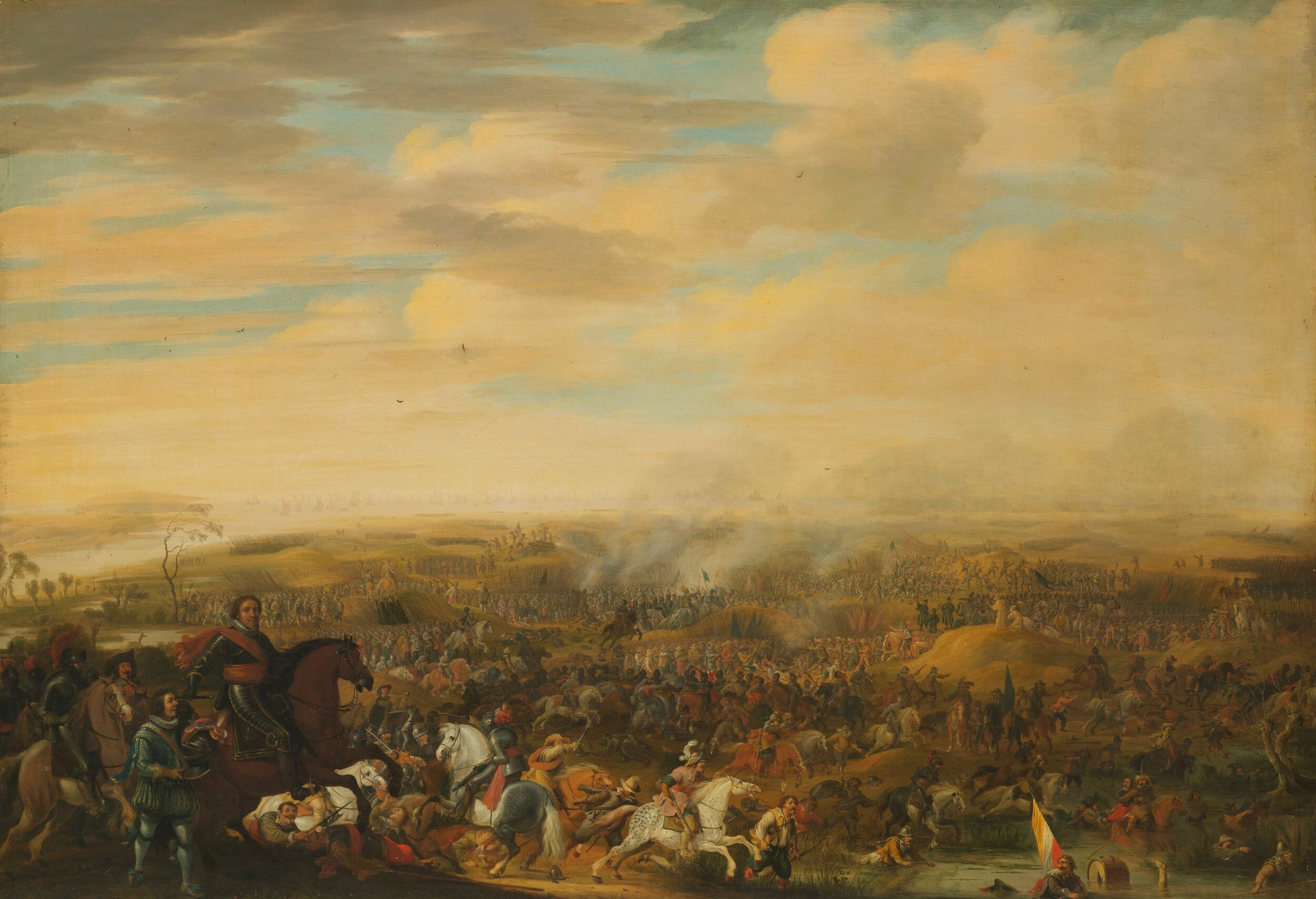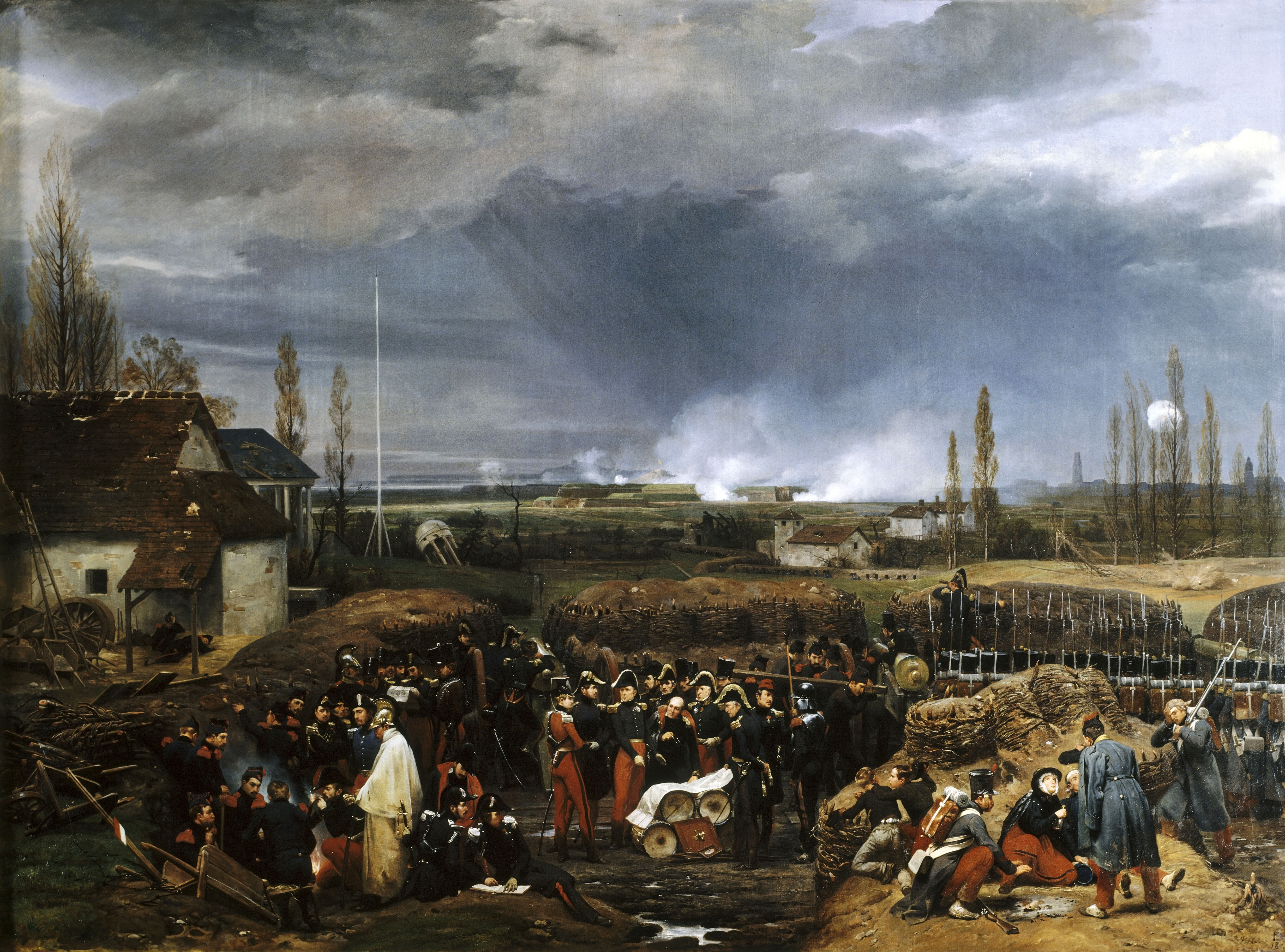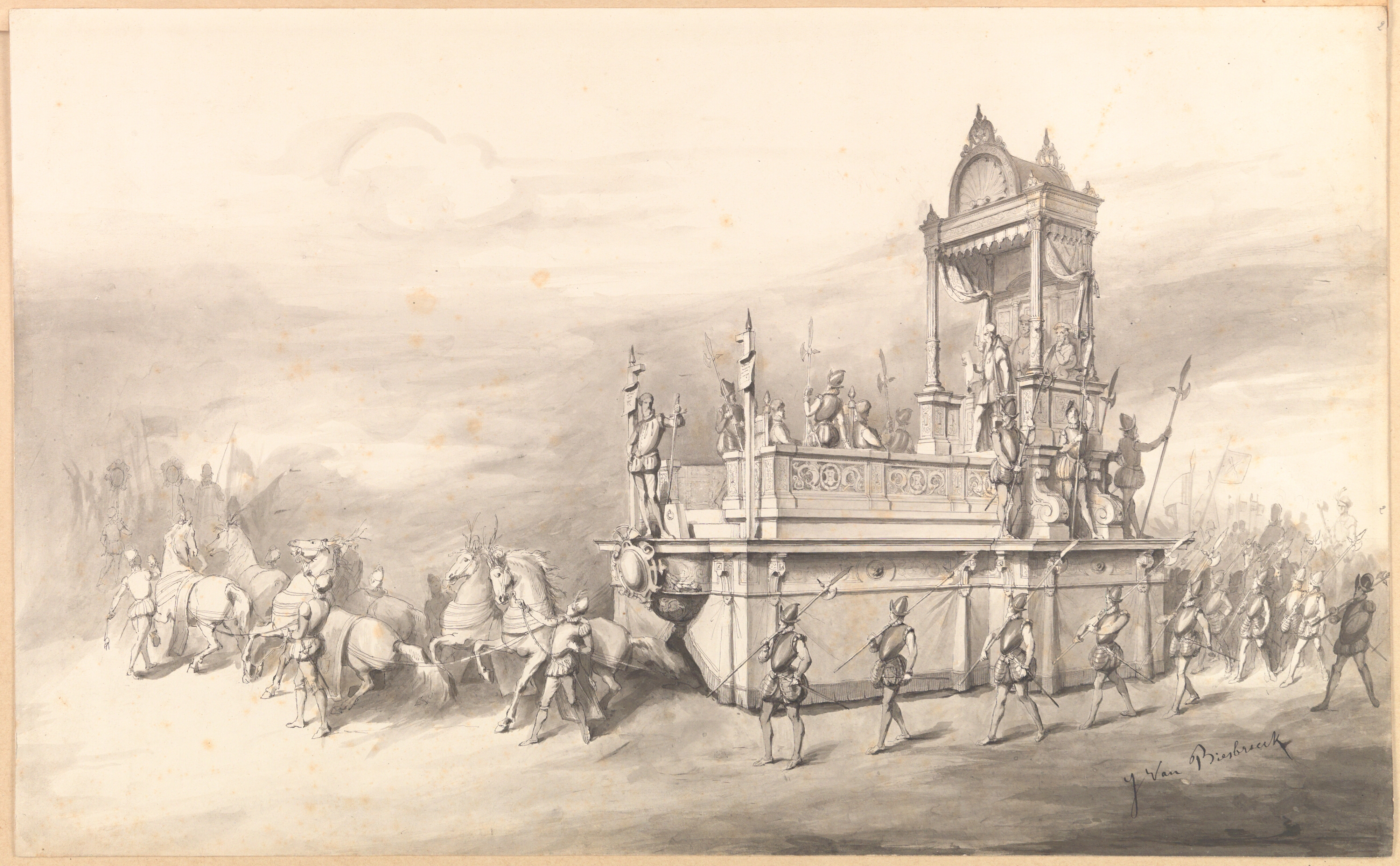|
Frédéric Perrenot
Frédéric Perrenot (1536–1600), lord of Champagney, baron of Renaix, was a soldier and diplomat in Habsburg service. Life Perrenot was born in Barcelona on 3 April 1536, the fifth and youngest son of Nicole Bonvalot and Nicolas Perrenot de Granvelle, a close adviser to Charles V. His studies at the University of Padua were cut short by his father's death in 1550. He served at the Battle of Renty (1554). Ernest Gossart, "Perrenot (Frédéric)", ''Biographie Nationale de Belgique''vol. 17(Brussels, 1903), 46-59. In 1559 he accompanied Philip II to Spain, then returned to the Low Countries, where he was aligned with his oldest brother, Antoine Perrenot de Granvelle. He served against the Dutch Revolt under the command of Fadrique de Toledo, before returning to Burgundy to command the garrison at Besançon. In 1571 he was appointed Governor of Antwerp. In a memorandum to the Duke of Medinaceli in 1573 he criticised the policy of terror that had been pursued by the Duke of Alva, th ... [...More Info...] [...Related Items...] OR: [Wikipedia] [Google] [Baidu] |
Nicolas Perrenot De Granvelle
Nicolas Perrenot de Granvelle (1486–1550) was a Burgundian politician who served as a close trusted adviser to Emperor Charles V. He was made suzerain of the imperial city of Besançon and held an influential position in the Netherlands. From 1530 until his death he was one of the emperor's most trusted advisers in Germany. He was the father of the cardinal and politician Antoine Perrenot de Granvelle, also a leading Habsburg minister, and built the Palace Granvelle in Besançon. He was born in Ornans and died in Augsburg. Life In 1518 he became a lawyer and was called at the age of 34 years to the Parliament of the Free County of Burgundy. In 1519 Charles V was elected emperor at the age of 19 years. Nicolas Perrenot de Granvelle quickly became a closely trusted advisor and was appointed chancellor of the empire. His sons and sons-in-law (Granvelle family) went on to occupy prominent positions at the imperial court. In 1527 he bought the seigniory of Grandvelle, locat ... [...More Info...] [...Related Items...] OR: [Wikipedia] [Google] [Baidu] |
Fernando Álvarez De Toledo, 3rd Duke Of Alba
Fernando Álvarez de Toledo y Pimentel, 3rd Duke of Alba (29 October 150711 December 1582), known as the Grand Duke of Alba (, ) in Spain and Portugal and as the Iron Duke () or shortly 'Alva' in the Netherlands, was a Spaniards, Spanish nobleman, general and statesman. He has often been considered the most effective general (rank), general of his generation, as well as one of the greatest in history. Historian John Lothrop Motley wrote of him "no man had studied military science more deeply, or practiced it more constantly" at his day. He was a royal promoter of military action against Kingdom of France, France and Protestantism, although he also defended a moral and strategic alliance with Kingdom of England, England that never realized. Alba achieved notoriety for his role during the Eighty Years' War in the Spanish Netherlands, where his prolonged campaigns and repressive political actions caused his figure to be reviled in European history as a symbol of Tyrant, tyranny. Bo ... [...More Info...] [...Related Items...] OR: [Wikipedia] [Google] [Baidu] |
1600 Deaths
In the Gregorian calendar, it was the first century leap year and the last until the year 2000. Events January–March * January 1 – Kingdom of Scotland, Scotland adopts January 1 as New Year's Day instead of March 25. * January 20 – Hugh O'Neill, Earl of Tyrone, renews the Nine Years' War (Ireland) against England with an invasion of Munster. * January 24 – Sebald de Weert makes the first recorded sighting of the Falkland Islands. * February 17 – On his way to be burned at the stake for Heresy in Christianity, heresy in Rome, Giordano Bruno has his tongue "imprisoned" after he refuses to stop talking. * February 19 – The Huaynaputina volcano in Peru erupts, in what is still the worst recorded volcanic eruption. * March 20 – Linköping Bloodbath: Five Swedish nobles are publicly executed by decapitation and Polish–Swedish union, Polish–Swedish King Sigismund III Vasa is ''de facto'' deposed as ruler of Sweden. April–June * April 19 – The first Netherl ... [...More Info...] [...Related Items...] OR: [Wikipedia] [Google] [Baidu] |
1536 Births
Year 1536 ( MDXXXVI) was a leap year starting on Saturday of the Julian calendar. Events January–March *January 6 – The Colegio de Santa Cruz de Tlatelolco, the oldest European school of higher learning in the Americas, is established by Franciscans in Mexico City. * January 22 – John of Leiden, Bernhard Knipperdolling and Bernhard Krechting are executed in Münster for their roles in the Münster Rebellion. * January 24 – King Henry VIII of England is seriously injured when he falls from his horse at a jousting tournament in Greenwich, after which the fully armored horse falls on him. The King is unconscious for two hours, sustaining an injury to an ulcerated leg and a concussion. * February 2 – Spanish conquistador Pedro de Mendoza founds Buenos Aires in what is now Argentina. * February 18 – A Franco-Ottoman alliance exempts French merchants from Ottoman law and allows them to travel, buy and sell throughout the sultan's domini ... [...More Info...] [...Related Items...] OR: [Wikipedia] [Google] [Baidu] |
Dole, Jura
Dole (, sometimes pronounced ) is a commune in the eastern French department of Jura, of which it is a subprefecture (''sous-préfecture''). History Dole was the capital of Franche-Comté until Louis XIV conquered the region; he shifted the ''parlement'' from Dole to Besançon. The university, founded by Duke Philippe le Bon of Burgundy in 1422, was also transferred to Besançon at that time. In January 1573, Gilles Garnier was put to death after being found guilty of lycanthropy and witchcraft. He had confessed to murdering and cannibalizing at least four children. The 1995 film '' Happiness Is in the Field'' was set in Dole and '' The Widow Couderc'' was also partially filmed there. Geography Dole is located on the river Doubs. The commune has a land area of . Demographics It is the most populous commune in Jura, although the préfecture is Lons-le-Saunier. Transport Dole-Ville station has rail connections to Dijon, Paris, Lausanne and Besançon. Dole – J ... [...More Info...] [...Related Items...] OR: [Wikipedia] [Google] [Baidu] |
Alexander Farnese, Duke Of Parma
Alexander Farnese (, ; 27 August 1545 – 3 December 1592) was an Italian noble and military leader, who was Duke of Parma, Piacenza and Castro from 1586 to 1592, as well as Governor of the Spanish Netherlands from 1578 to 1592. Nephew to King Philip II of Spain, he served in the Battle of Lepanto and the subsequent campaigns of the Holy League against the Ottoman Empire, being latter appointed general of the Spanish army during the Dutch revolt until his death in 1592. During the French Wars of Religion, he decisively relieved Paris for the Catholic League. His talents as a commander, strategist and organiser earned him the regard of contemporaries and historians as the greatest general of his age, as well as one of the best in history. He stood out for his equal proficiency at war and diplomacy. Under his leadership, Philip II's army achieved the most comprehensive successes in the history of the Eighty Years' War, capturing more than thirty towns between 1581 and 1587 bef ... [...More Info...] [...Related Items...] OR: [Wikipedia] [Google] [Baidu] |
Antwerp Citadel
Antwerp Citadel (, ) was a pentagonal bastion fort built to defend and dominate the city of Antwerp in the early stages of the Dutch Revolt. It has been described as "doubtlesse the most matchlesse piece of modern Fortification in the World" and as "one of the most studied urban installations of the sixteenth century". History The citadel was designed by the Italian engineer Francesco Paciotto and built on the orders of the Duke of Alva. Initial construction was completed in 1572. After the Sack of Antwerp (1576) the citizens partially demolished the fortification, but it was reconstructed after the Fall of Antwerp (1585). The citadel saw action towards the end of the Napoleonic Wars, when it was defended by determined Bonapartists. The Siege of Antwerp (1814) continued for a month after Napoleon's abdication. After the Belgian Revolution of 1830, Dutch forces remained in control of the citadel until the Siege of Antwerp (1832). Demolition began in 1874 and was completed ... [...More Info...] [...Related Items...] OR: [Wikipedia] [Google] [Baidu] |
Philips Of Marnix, Lord Of Saint-Aldegonde
Philips of Marnix, Lord of Saint-Aldegonde, Lord of West-Souburg (Dutch: Filips van Marnix, heer van Sint-Aldegonde, heer van West-Souburg, French: Philippe de Marnix, seigneur de Sainte-Aldegonde; 7 March/20 July 1540 – 15 December 1598) was a Flemish and Dutch writer and statesman, and the probable author of the text of the Dutch national anthem, the ''Wilhelmus''. Biography - career Marnix of St. Aldegonde was born in Brussels, the son of Jacob of Marnix. He studied theology under John Calvin and Theodore Beza at Geneva. Returning to the Habsburg Netherlands in 1560, he threw himself into the cause of the Reformation, taking an active part in the compromise of the nobles in 1565 and the assembly of Sint-Truiden. He issued a pamphlet in justification of the iconoclastic movement Beeldenstorm which devastated many churches in Flanders in 1566, and on the Duke of Alba's arrival next year had to flee the country. After spending some time in Friesland and in the Electorate ... [...More Info...] [...Related Items...] OR: [Wikipedia] [Google] [Baidu] |
Pacification Of Ghent
The Pacification of Ghent, signed on 8 November 1576, was an alliance between the provinces of the Habsburg Netherlands. The main objectives were to remove Habsburg Spain, Spanish mercenaries who had made themselves hated by all sides due to their plundering, and to promote a formal peace with the rebellious provinces of Holland and Zeeland. Background In 1566, the Habsburg Netherlands experienced considerable political upheaval and civil unrest, which culminated in the Beeldenstorm, iconoclastic fury of that year. Its ruler, Philip II of Spain, responded by appointing Fernando Álvarez de Toledo, 3rd Duke of Alba as List of governors of the Habsburg Netherlands, Governor-general, and in 1567 he arrived there to restore order, accompanied by an army of mercenaries. Philip soon replaced the most important advisors to former regent Margaret of Parma, either by summarily executing those such as the counts of Lamoral, Count of Egmont, Egmont and Philip de Montmorency, Count of Hoorn, ... [...More Info...] [...Related Items...] OR: [Wikipedia] [Google] [Baidu] |
Middelburg, Zeeland
Middelburg () is a List of cities in the Netherlands by province, city and List of municipalities of the Netherlands, municipality in the south-western Netherlands serving as the Capital (political), capital of the Provinces of the Netherlands, province of Zeeland. Situated on the central peninsula of the Zeeland province, ''Midden-Zeeland'' (consisting of former islands Walcheren, Noord-Beveland and Zuid-Beveland), it has a population of about 48,000. In terms of technology, Middelburg played a role in the Scientific Revolution at the early modern period. The town was historically a center of Lens (optics), lens crafting in the Dutch Golden Age, Golden Age of Dutch science and technology. The invention of the microscope and invention of the telescope, telescope is often credited to Middelburg spectacle-makers (including Zacharias Janssen and Hans Lipperhey) in the late 16th century and early 17th century. History The city of Middelburg dates back possibly to the late 8th ce ... [...More Info...] [...Related Items...] OR: [Wikipedia] [Google] [Baidu] |
Sack Of Antwerp
The sack of Antwerp, often known as the Spanish Fury at Antwerp, was an episode of the Eighty Years' War. It is the greatest massacre in the history of the Low Countries. On 4 November 1576, mutinying Spanish tercios of the Army of Flanders began the sack of Antwerp, leading to three days of horror among the population of the city, which was the cultural, economic and financial center of the Low Countries. The savagery of the sack led the provinces of the Low Countries to unite against the Spanish crown. The devastation also caused Antwerp's decline as the leading city in the region and paved the way for Amsterdam's rise. Causes The principal cause of the sack was the delay in payment due to the soldiers by Philip II of Spain, who had recently declared bankruptcy. Bankers refused to perform the transactions the king of Spain asked of them until they had reached a compromise. Case in point, the transfer of the troops' salary from Spain could not be performed by letter of ... [...More Info...] [...Related Items...] OR: [Wikipedia] [Google] [Baidu] |
Juan De La Cerda, 4th Duke Of Medinaceli
Juan de la Cerda y Silva, 4th Duke of Medinaceli (c. 1514 – 1575), Grandee of Spain, was a Spanish nobleman. He was the son of Don Juan de la Cerda, 2nd Duke of Medinaceli, by second wife María de Silva. In 1552 Juan de la Cerda inherited the titles from his older half-brother Gastón de la Cerda y Portugal. Both half brothers, the 3rd, Gaston, and the 4th Duke, Juan II, are widely reported in many places and articles as being born "out of marriage" from different women and being "legitimated" males by the Crown as legal successors to their father, the second duke Juan I, also, apparently, a legitimated bastard, however. In 1557, King Philip II of Spain appointed him Viceroy of Sicily, a position he held until 1564. During that time he besieged with a fleet the North-African harbor of Tripoli, now in Libya, dealing with Dragut, an Ottoman privateer and admiral. The force, including ships from Spain, Genoa, Tuscany, the Knights of Malta and the Papal States, was however n ... [...More Info...] [...Related Items...] OR: [Wikipedia] [Google] [Baidu] |






